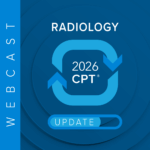The criteria and definitions for sepsis are presented to help medical staff better understand sepsis.
I popped on LinkedIn to repost the details of the Centers for Medicare & Medicaid Services (CMS) listening session regarding complication and comorbidity (CC) and major CC (MCC) comprehensive analysis after a recent edition of Talk Ten Tuesdays, and I read a post by our friend, Dr. Jim Kennedy, regarding the Centers for Disease Control and Prevention’s (CDC’s) proposal regarding sepsis (https://www.cdc.gov/nchs/data/icd/SEPSIS_tabular_final_dp.pdf) and his comments to Donna Pickett from the CDC.
It has been driving me mad trying to identify why sepsis is so singularly difficult to diagnose when compared with other medical conditions. Is it just because it is a clinical diagnosis without gold-standard criteria?
Even if you can’t isolate or identify the organism every time, or from every site, we agree when an organism is causing corresponding infectious disease. Koch’s postulates were useful when we were discovering the rules of bacteriology, but they are not unassailable. Viruses often violate the postulates, but we still acknowledge that viruses, bacteria, protozoa, and fungi are infectious etiologic agents. We can link their causality with disease.
If only positive blood cultures were always seen in sepsis and were the gold-standard diagnostic test! They are not. The ratio is probably not even 50 percent. More than half of patients with “sepsis” do not have positive blood cultures. Of course, even that number is not reliable if we can’t agree which patients have sepsis and which do not. There is no blood test to diagnose sepsis.
There are diseases, disorders, and conditions that have sets of criteria to establish the diagnosis. There is a point system for the classification of a patient as having rheumatoid arthritis. Having a positive rheumatoid factor is not mandatory. The diagnosis of bacterial endocarditis is from a Chinese menu – one from Column A, two from Column B. There is no proven list of clinical criteria for sepsis.
Demyelination of nerves is not incontrovertible proof of multiple sclerosis (MS), but it is strongly supportive if MS is your working diagnosis. One of the principles for its diagnosis, similar to rheumatoid arthritis, is that other possible diagnoses have been ruled out. That is known as a diagnosis of exclusion. This is one of the details people often forget about using systemic inflammatory response syndrome (SIRS) in the diagnosis of sepsis; you must exclude any other confounding cause of the abnormal vital signs or white blood cell count.
This highlights the fact that many conditions may have signs or symptoms found in other conditions as well. You wouldn’t pick one of those common features to be the defining diagnostic criterion for a condition. Having a sore throat is often seen in strep throat, but it isn’t sufficient to diagnose streptococcal pharyngitis. Are tachycardia and a fever sufficient to diagnose sepsis?
People tell me their medical staffs are resisting Sepsis-3. We need to deconstruct the problem. I think part of the issue, other than financial, is that people are conflating a definition with diagnostic criteria.
Regarding Sepsis-3, do they not believe that the definition of sepsis is “life-threatening organ dysfunction due to a dysregulated host response to infection?” This is the current definition. Surviving Sepsis Campaign, the creators of historical Sepsis-2, even accepted the definition in 2016. The CDC document asserts that “there is international agreement on the definition of sepsis.”
Has the medical staff misinterpreted the international consensus on sepsis and septic shock as laying forth SOFA (Sequential Organ Failure Assessment) score as the criteria to make the diagnosis? SOFA is not meant to be the definitive diagnostic criteria. The consensus report asserts that sepsis is “a syndrome without, at present, a validated criterion standard diagnostic test,” and that “there are, as yet, no simple and unambiguous clinical criteria or biological, imaging, or laboratory features that uniquely identify a septic patient.”
Or does the medical staff still love the convenience of SIRS, a broader syndrome that has been inappropriately reduced down to only abnormal vital signs and white blood cell count)? I am totally supportive of using abnormal vital signs as a trigger to take a closer look at a patient to determine if sepsis is present or not, but even the CDC says in their proposed sepsis statement that “a patient can have a life-threatening condition without SIRS, or a non-life-threatening condition with SIRS.”
I wholeheartedly agree with the CDC when they note that “the definition and the clinical criteria are two distinct functionalities.” The situation gets even more complicated when one considers the treatment directives.
The core measures bundle, SEP-1, was designed to guide interventions to lower morbidity and mortality with standardized order sets. The set analyzed to see if a patient qualifies for SEP-1 includes patients who have a code for sepsis.
If the provider documents “severe sepsis,” they fall into the core measures. Let me reiterate this: If the patient does not have SIRS, but the clinician uses their clinical judgment and believes they have organ dysfunction establishing historical “severe sepsis” (which constitutes all sepsis, under the Sepsis-3 definition), and they document it explicitly as “severe sepsis,” the patient falls under the purview of SEP-1, even if they don’t meet the SEP-1 clinical criteria.
For coding purposes, if the provider cannot abide by using outdated terminology, they can document “sepsis with acute sepsis-related organ dysfunction,” and the coder is permitted to pick up the ICD-10-CM code R65.20, Severe sepsis, even if the clinician never mentions the word “severe.” However, this is not sufficient for the SEP-1 abstractor to credit the patient with severe sepsis.
When “sepsis” appears in the chart without the qualifier “severe,” or as septic shock, the abstractor must pore through the record to determine if and when the patient meets criteria. Those criteria are infection plus SIRS, plus the CMS-defined organ dysfunction criteria (i.e., SBP < 90 mmHg or MAP , 65 mmHG; acute respiratory failure with need for mechanical ventilation; Cr > 2.0 or urine output < 0.5 ml/kg/hr X 2 hr; total bilirubin > 2 mg/dL; platelets < 100,000; INR > 1.5; lactate > 2.0 mmol/L).
If the patient does not meet the criteria, they are not included in the SEP-1 core measure. Let us be crystal clear: this does not mean the patient did not have sepsis; it means they didn’t meet the strict CMS criteria for the mandatory treatment bundle. If you die with encephalopathy, high oxygen requirements short of mechanical ventilation, a bilirubin of 1.6, and a creatinine of 1.9, you are just as dead.
I do not believe clinical providers should change their medical practices to meet coding or regulatory criteria (I will discuss my thoughts about New York State at a future date). Our job is to take excellent care of patients, not to tick off boxes on a list of criteria.
Here are my conclusions from Sepsis-3 that enter into the calculation of diagnosing and coding sepsis:
- All sepsis is now really the condition formerly known as “severe sepsis,” but there no longer is a condition called “severe sepsis.” There shouldn’t be a code for it, either.
- SIRS is neither necessary nor sufficient to diagnose sepsis.
- For sepsis, there must be organ dysfunction, and it may or may not be the specified organ dysfunctions in SEP-1.
How does the CDC’s proposal relate? In my opinion, it is trying to align current best-practice medicine, documentation, and coding.
On principle, I agree with eliminating the code R65.20, for severe sepsis. If you adopt the current definition of sepsis, life-threatening organ dysfunction due to dysregulated host response to infection, then the modifier and code are redundant. I strongly support putting septic shock in the subcategory R57 with the other types of shock.
There may be quality implications. R65.20, Severe sepsis has always been excluded from serving as an MCC if the principal diagnosis is some flavor of sepsis. However, some mortality models include severe sepsis as an independent risk-adjusting diagnosis. This will deflate “expected,” but it should now do it across the board. Some Sepsis-3-adopting institutions have been penalized with apparently inferior mortality statistics because their coding no longer reflects severe sepsis. The elimination of R65.20 may rectify this problem.
I do foresee a fundamental problem with the CDC proposal. There shouldn’t be an inclusion term of SIRS of infectious origin, NOS under A41.9, Sepsis. First, I would posit that elevated WBC, fever, tachycardia, and tachypnea could be considered integral or inherent to sepsis. There is an issue with what to code for a patient who is admitted for having SIRS, with or without an underlying infection, who never develops organ dysfunction; in this scenario, sepsis gets ruled out, but they’ve undergone a septic work-up due to the concern of having sepsis. They utilize considerable resources. Perhaps they should create code R65.9, Systemic inflammatory response syndrome, unspecified, to cover that scenario.
Finally, CMS is just going to have to do an overhaul of SEP-1. If the CDC accepts that there is no such thing as “severe sepsis” anymore, CMS should follow suit. The inclusion criteria for SEP-1 must be aligned with the current definition and best-practice medicine.
Please review the proposal and give your comments to the CDC. Our actions do change policy.
Programming Note:
Listen to Dr. Erica Remer report this story live today during Talk Ten Tuesday, 10-10:30 a.m. EST.













